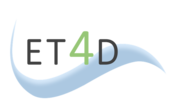WP2: Experimentation sites
WP Leader: AgHiTech
Objectives
-
Validate a low-cost environmental monitoring system
-
Identify and implement interfaces to other sensors used on-farm
-
Demonstrate scalability and operability of the data management system with embedded sensors
Description of content:
There are multiple digital tools monitoring production efficiency and environmental conditions of livestock in real-time in the context of PLF, but they are often too expensive to be widely used in commercial farms. WP2 involves the installation and maintenance of the ET4D sensor system, exploring the potential of a simplified system for small farms, management of data access, demonstration of the upscaling potential of the ET4D DMS, and the pre-processing of the collected data (i.e., general data quality check, selection and transfer of data) as outlined below. The data selection in T2.1 and T2.3 may include data anonymisation to avoid transfer of sensitive data (in the farmer’s opinion, to be obtained from WP3), where different levels of anonymisation, filtering or aggregation may be offered.
Role of the partners:
AgHiTech will manage the installation of the Enviro-Detect device in the different test farms together with the local research partners in the respective countries as well as the incorporation of sensor data into the ET4D database. TOGU is responsible for the deployment of the simplified monitoring unit, those potential they will exploit together with AgHiTech and selected demonstration farms. ATB will coordinate the validation measurements, while MIGAL, AKI, EMU, UPWr, UZ and TOGU coordinate the local demonstrations. UOULU will monitor the performance of the ICT environment, during the measurements.
Task:
- On-farm trials
-
Environmental monitoring light version
-
On-farm demonstration cases
Deliverables:
-
Preprocessed validation dataset available for project internal use (storage in open repository prepared)
-
Report on suggested on-farm device distribution in dependence on farm design and boundary conditions (internal report)
-
Summart of the lessons learned composed
